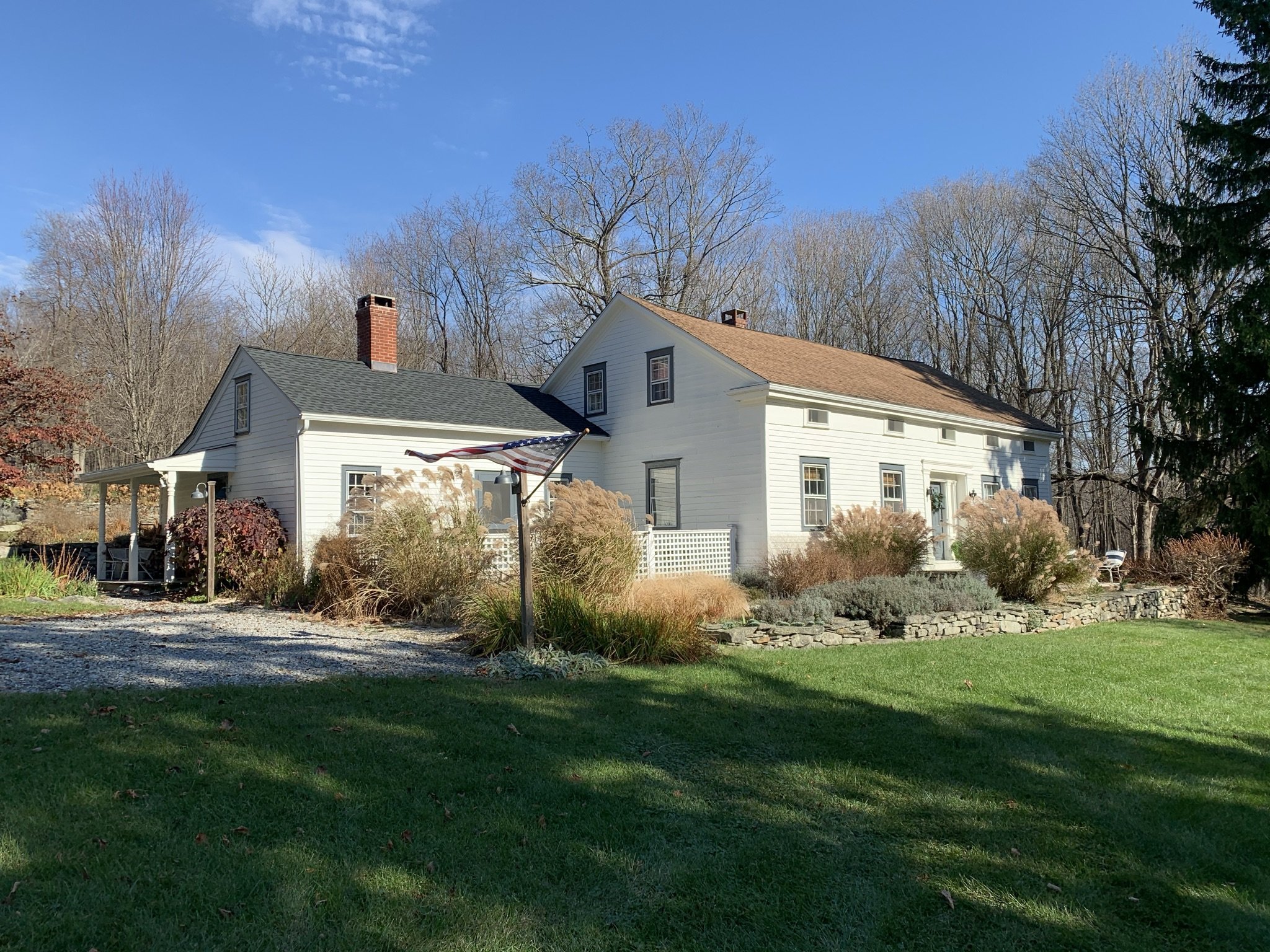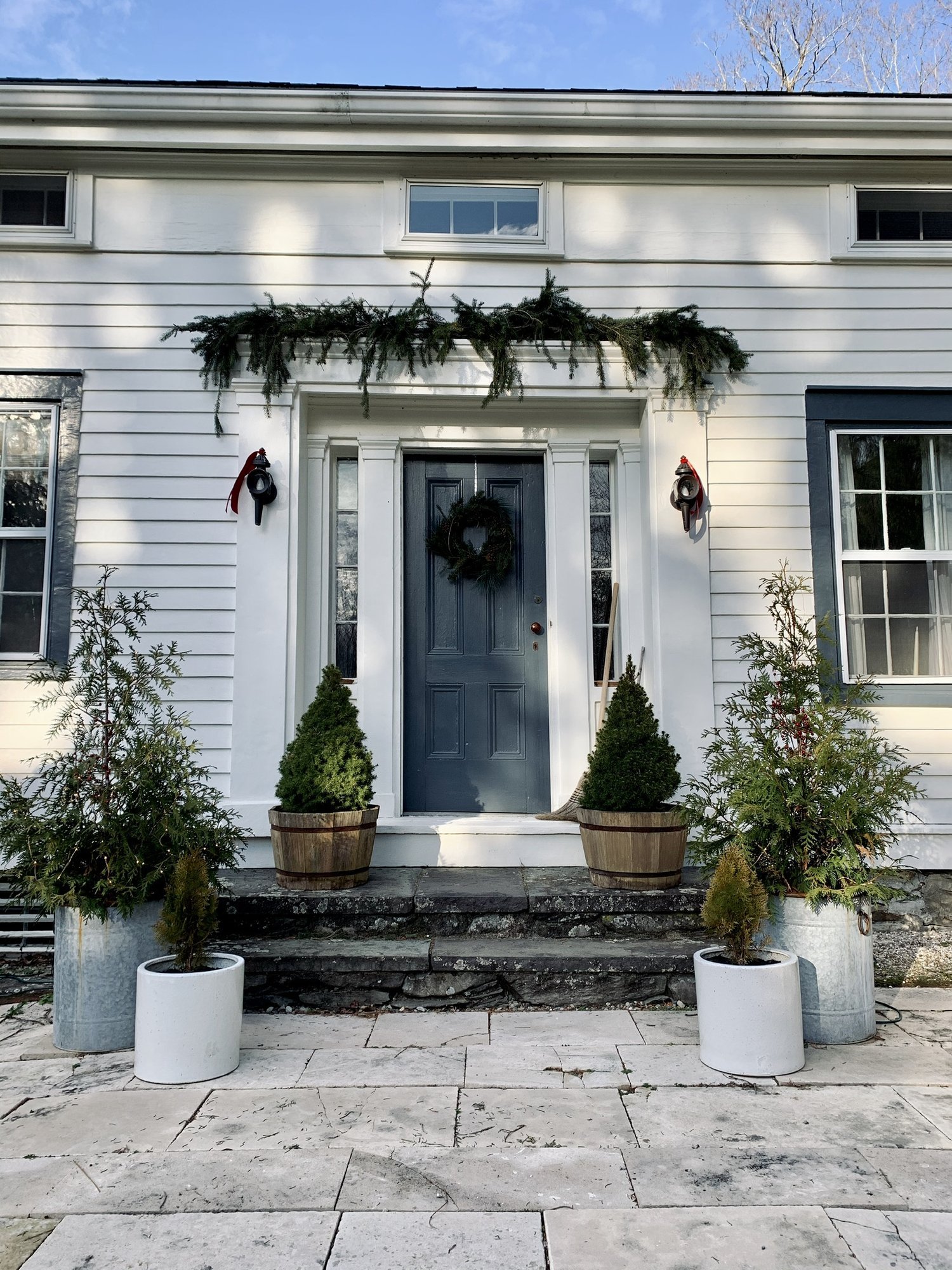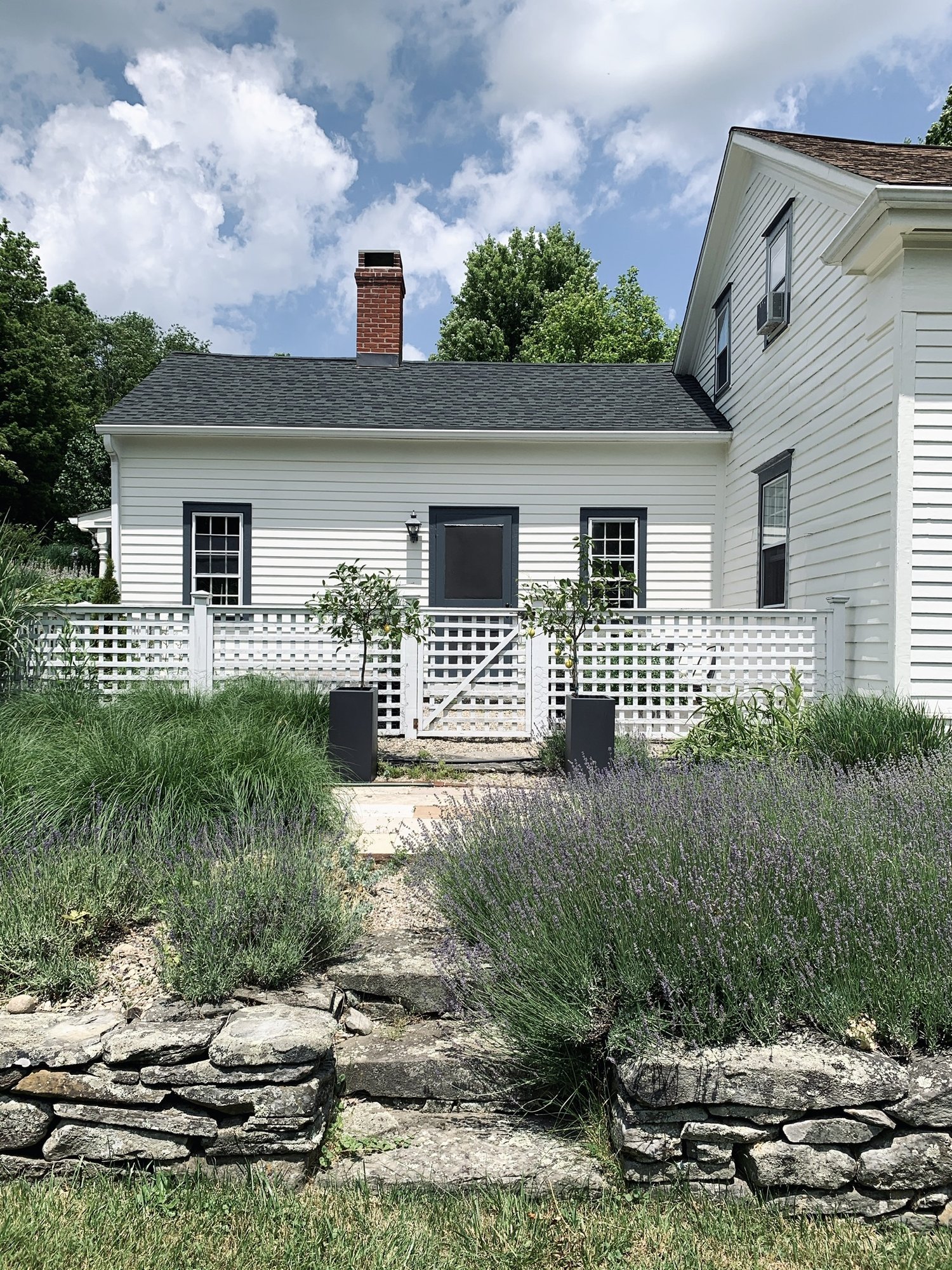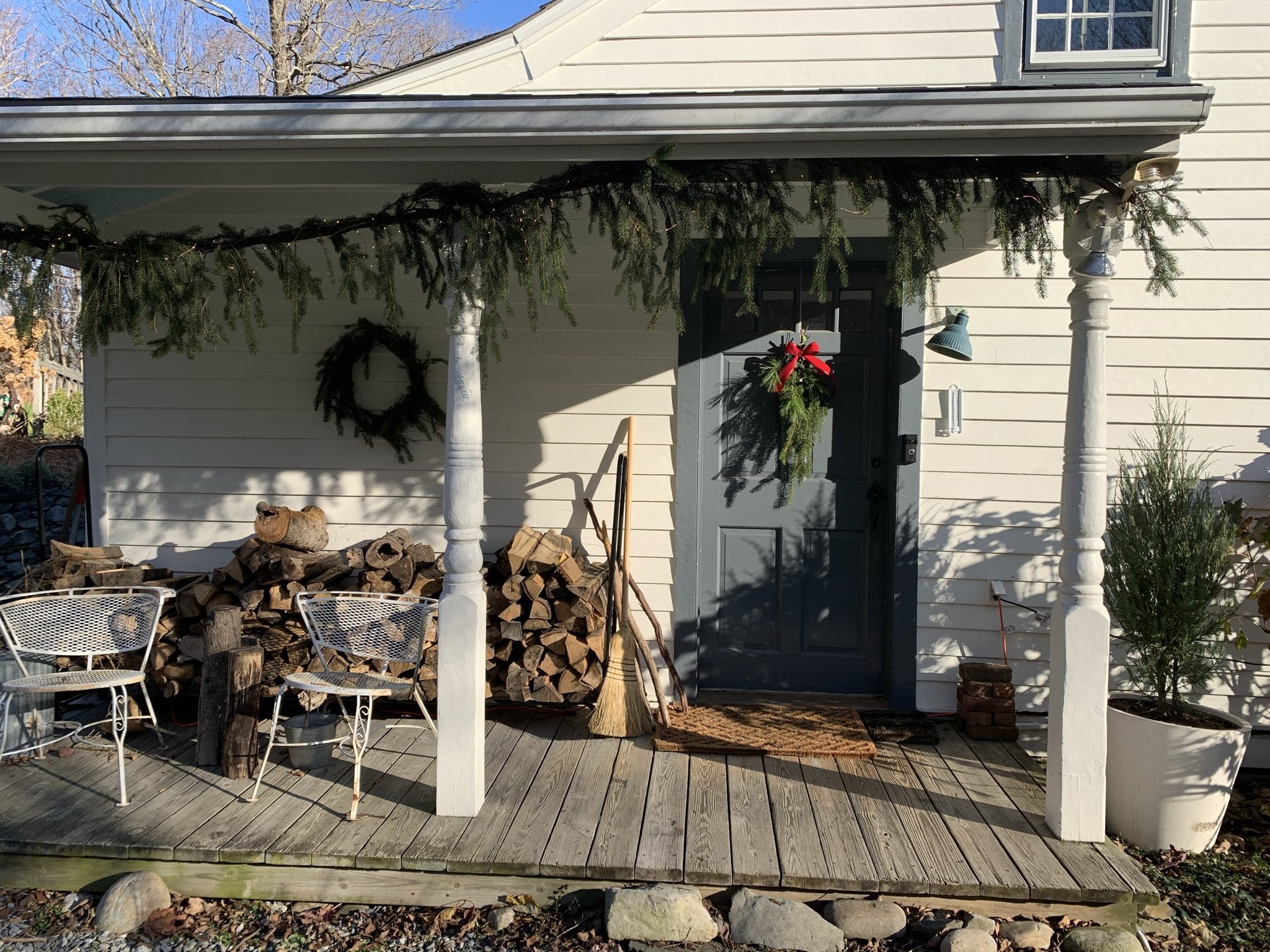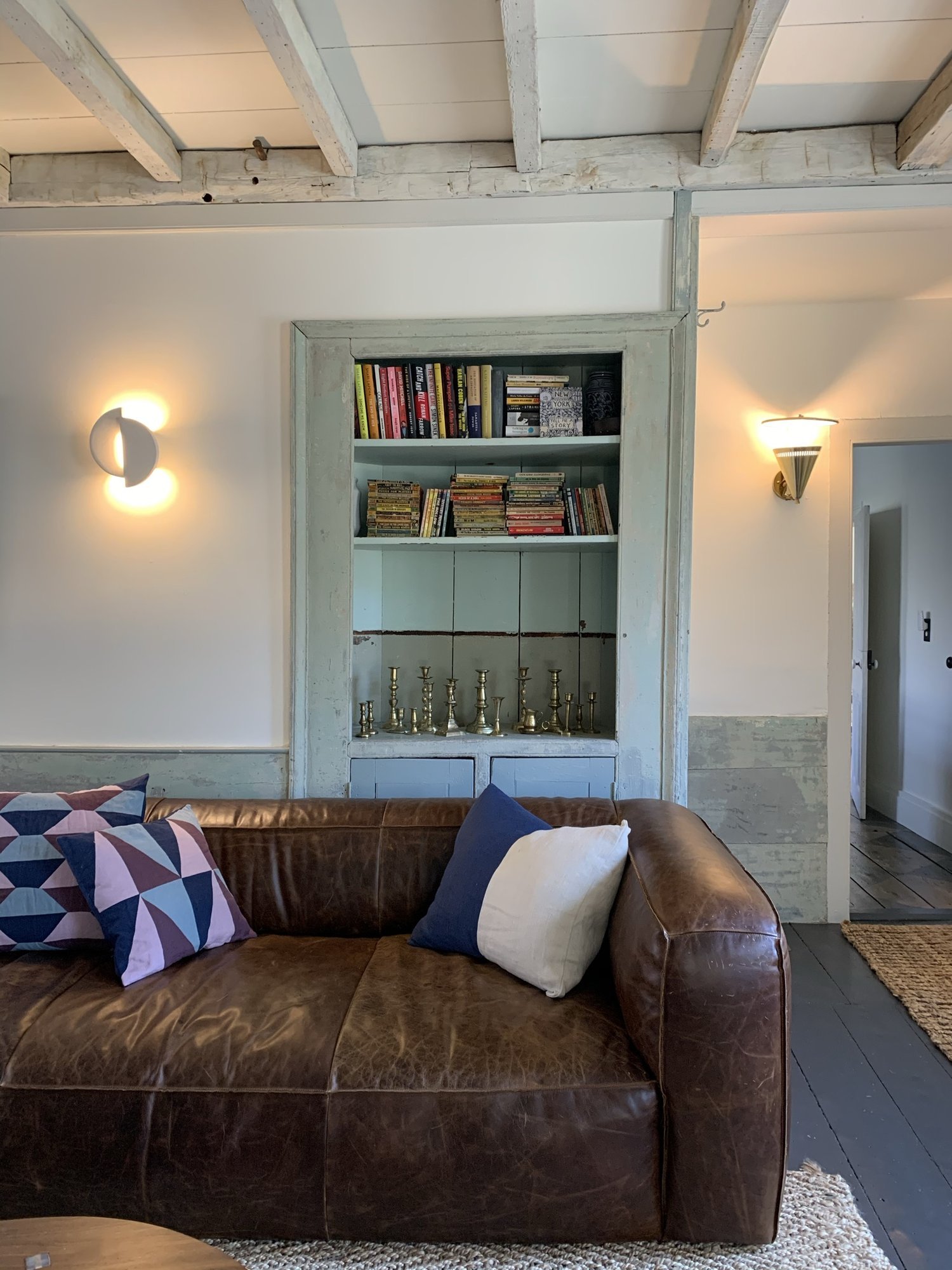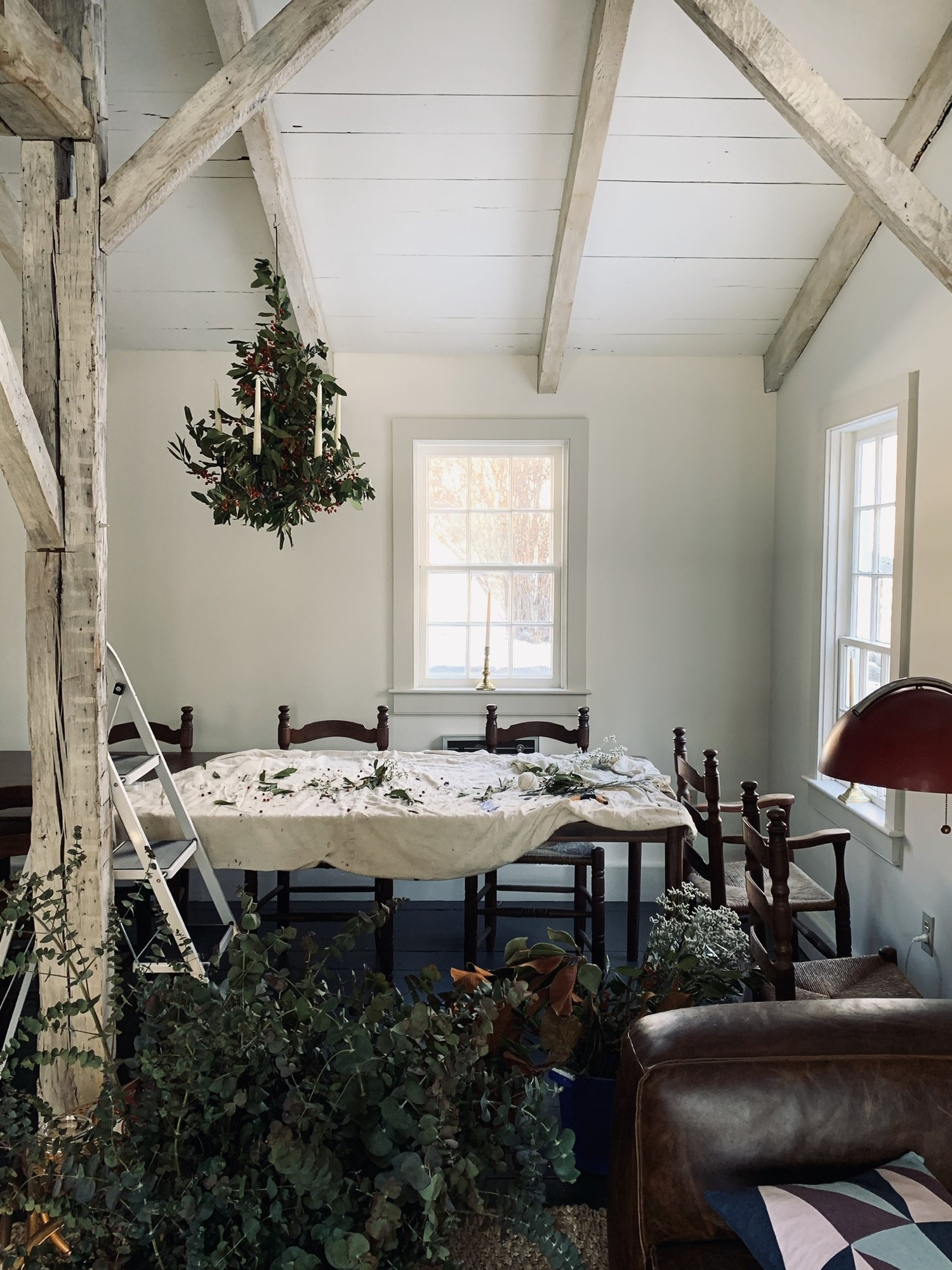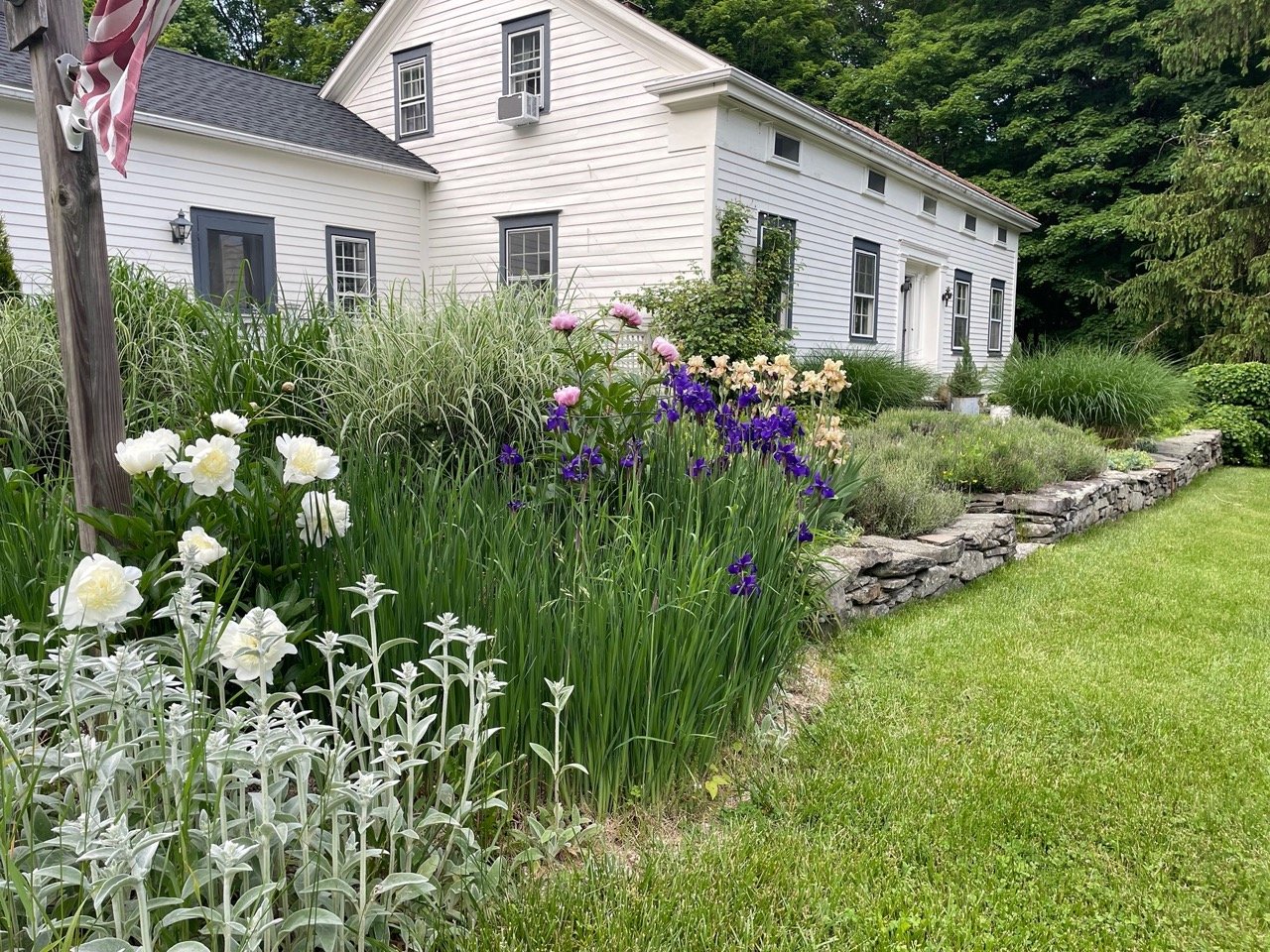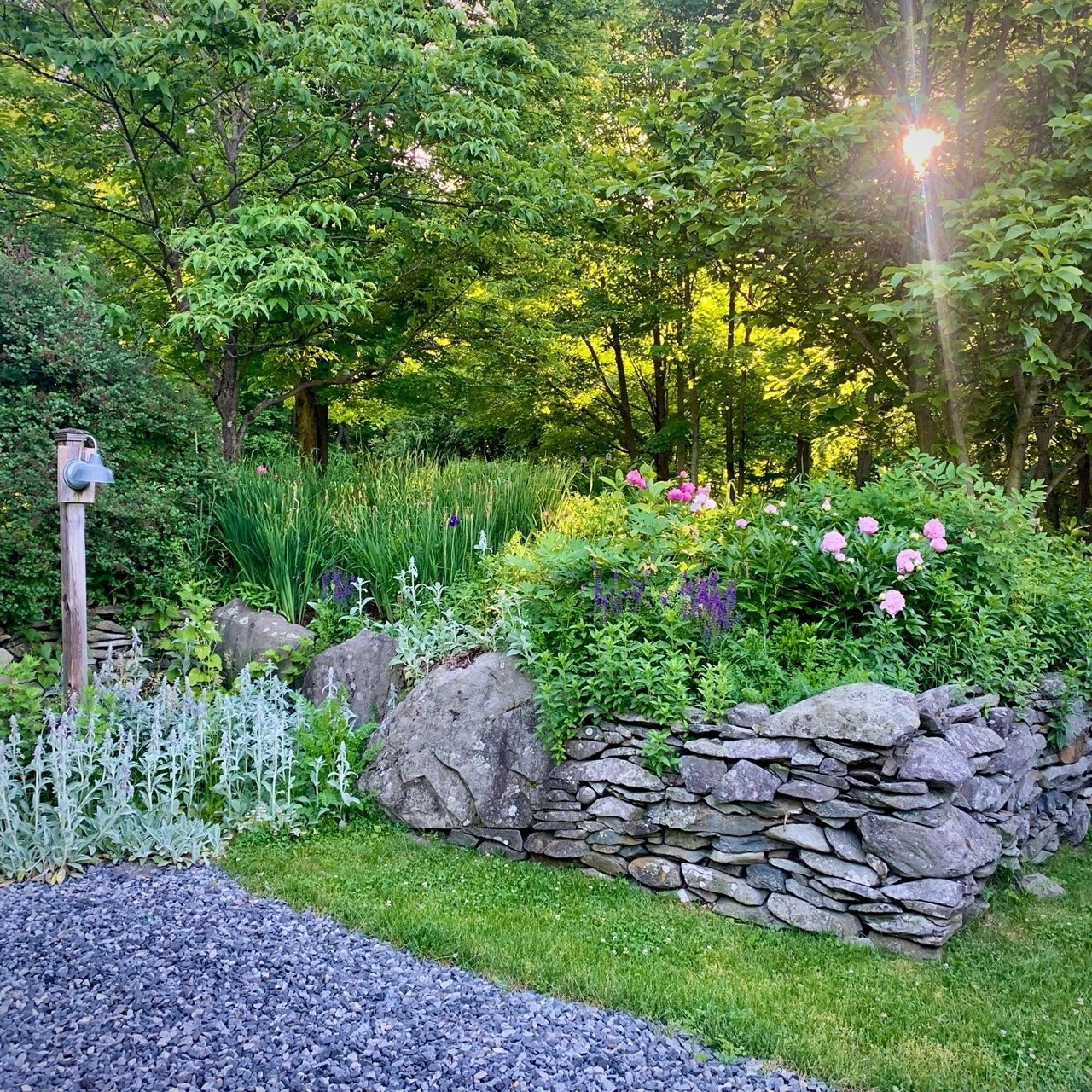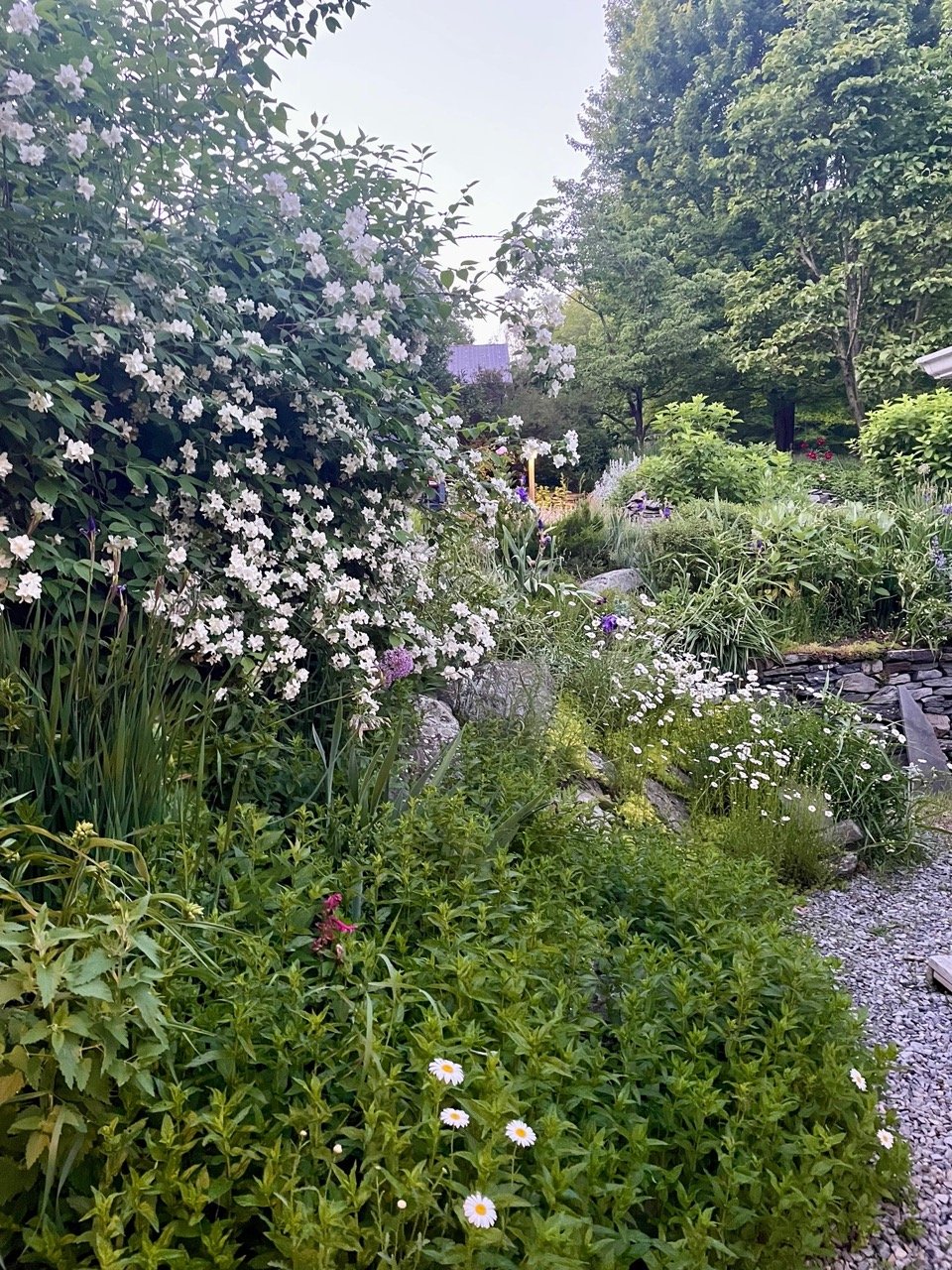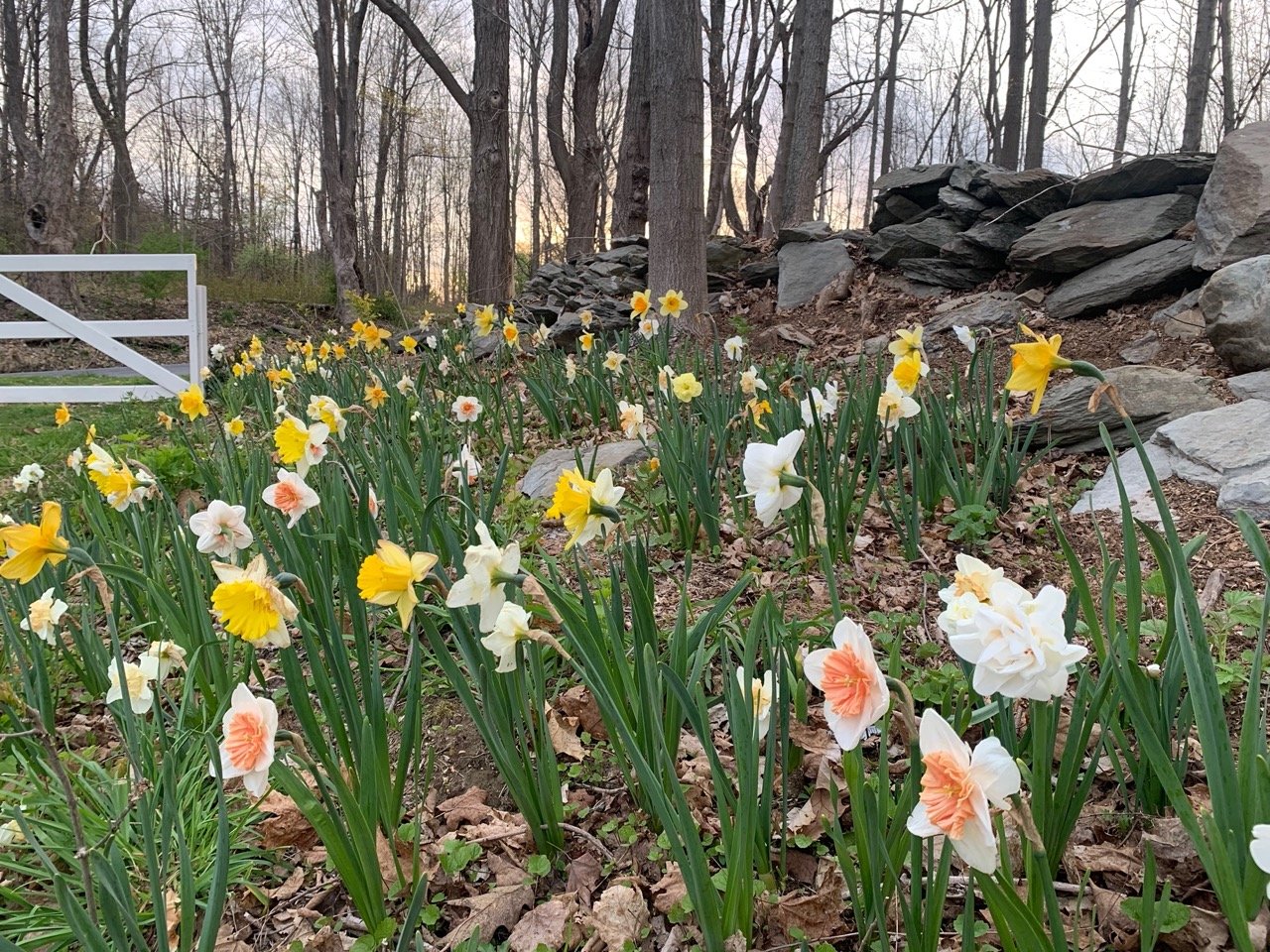HILLSIDE HOUSE
21 Wendover Road, Stanfordville NY
The Garden
HILLSIDE HOUSE
"Hillside House" is a well preserved 1700s &1800s farmhouse in Stanfordville. Unified by exposed stone foundations built into its surrounding slope, an 1800s Greek-Revival structure is joined with the original 1700s hall-and-parlor construction.
The Greek-Revival home is one-and-a-half-stories, gable-roofed and surmounted by a wide frieze board pierced with eyebrow windows. Its five-bay facade features original six-over-six windows and a traditionally Greek Revival entrance - a slightly recessed paneled door flanked by broad pilasters and half sidelights. There is evidence of a possible porch or portico in the past. The original house connected to its west is a simple single-story, hall-and-parlor design with a front-gabled porch.
Inside the primary center-halled structure, the public rooms include traditional crossetted, or “Greek Ear” door surrounds, also reflected in window mouldings and panels. The staircase's newel post and curved corners are nearly identical to the Livingston's Forth House from a similar period, albeit in a more modest house. The older 1700s structure has exposed beams throughout and a renovated hearth that still shows its age and use with functional side cupboards. There are wide-planked floors throughout the full house.
As listed in its 1987 "Building-Structure Inventory Form’, the cedar-sided Carriage House (Barn) stands further up the hill. Its use has been updated, but its interior continues to feature its original exposed beams, stairs and doors. There are typical stone walls throughout the grounds, along with ancient trees including a 20’ tall apple tree.
HISTORY
In 1792, Jonathan Lapham, a descendant of a prominent Quaker family established in Dutchess County since the 1740s, sold the majority of his farm to David Waltermire, a prosperous farmer of German Palatine descent (Liber 21, Page 104). The Lapham family had deep roots in the region, with Jonathan's grandfather, John Lapham, having migrated to New England from Devonshire, England, in the 1600s. Despite their Quaker faith, which traditionally opposed military service, Jonathan and his sons joined the Sixth Regiment of Dutchess County's Revolutionary Militia ("New York in the Revolution," Vol. 1, P. 249).
This transaction was one of several surrounding farms purchased by David Waltermire. In 1832, his son-in-law, David W. Carroll, acquired the existing structure on the property (Liber 53, Page 358) and farmed the surrounding 150+ acres. The farm remained operational until the 1980s. During his time on the farm, Carroll kept 150 sheep, 40 swine, and milk cows. He was politically active in the county and state, serving in the State Infantry, representing at the Whig county convention nomination, and being named a "Justice" in the town of Stanford. A free person of color lived on the farm as of the 1840 census. Carroll was included in the 1858 Dutchess County Map and continued acquiring land throughout Stanford. His bible is currently archived with the Daughters of the Revolution.
When his father-in-law died in 1855 and his farms went to auction, DW Carroll moved on to a larger farm further down the road to a grander house, and George T Palmer bought the 150+ acre farm along with "David W Carroll House". The Palmer family had been land owners in the town since the 1700s, and George T (along with his step-brother Walter Beckwith, whose house is included in the National Register) learned to farm in his father Benjamin Palmer's neighboring farm..
George T Palmer and "Hillside" are listed in the 1867 and 1876 Stanford map, and the farm history continued to mirror the agricultural history of Dutchess County after the Civil War. He's in the 1880 Agricultural Census (6 horses, 6 cows, 500lbs butter/year, 50 sheep, 30 poultry, 23 acres of corn, 16 acres of oats, 15 acres of wheat, 150 apple trees). In 1889 George T Palmer buys "Vail Farm" in Milan, which his son Benjamin farms (as listed in the Milan census), and when Benjamin marries in 1891 the Poughkeepsie Eagle newspaper calls GT Palmer "a well-to-do farmer of Stanford".
The farm continues to be active and in the same family during most of the 20th century, but the tone changes. After George T Palmer and wife Caroline Barlow's death, their daughter Mary Finch continues to farm the land along with her husband Perry Finch. She is listed in the 1918 Dutchess County Map, showing the proposed Taconic Parkway path right through the farm.
Mary and Perry's son George continues to farm the land but has no children, while their other son Stanley moves to Poughkeepsie, becomes the Chairman of Exhibits for the 1939 Word's Fair, and although he inherits the farm, does not farm it. Neither does his daughter Bonita and husband Tom Scheinman, President and Board of Directors of United Way, who then sells it in 1982 when it is divided.
At this point, Kermit Love and his partner Christopher Lyall brought the farmhouse and carriage house back to life. Creator of Sesame Street's Big Bird and costume designer for George Balanchine and Agnes de Mille, Kermit relied on local carftsmen to restore elements like wood floors and stone walls on the property. The property was later taken on by Gael Towey, creative director of Martha Stewart Magazine who photographed several features for the magazine that showcased the house's original details. Since then, the farmhouse has continued with creatives that appreciate its history and legacy.


